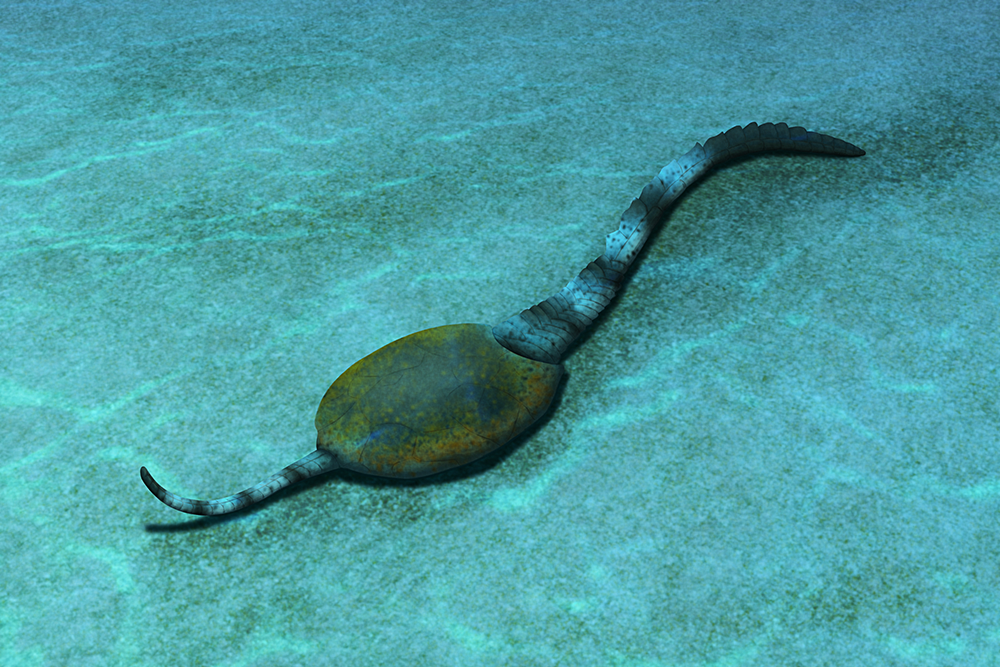Syringocrinus paradoxicus from the Upper Ordovician of North America (~450 mya). Measuring up to around 6cm long (2.3″), it was part of an extinct group of marine animals known as solutes – characterized by irregularly-shaped bodies covered in calcite armor plates, the structure of which suggest they were echinoderms despite their complete lack of any proper symmetry.
It had two appendages, one a short “arm” that was probably used for feeding on food particles suspended in the water, and the other forming a longer stalk-like “tail” that may have served to propel it along the seafloor.
Solutes were once thought to be closely related to the equally weird-looking stylophorans, but some versions of the echinoderm family tree place them much further apart, suggesting their superficial similarities may have been due to convergent evolution instead.


Slab of Syringocrinus paradoxicus carpoids found. On april 1st 2024 a slab covered in carpoid specimens and parts was fortuitously discovered while obtaining a specimen sample from the Verulam formation in Ontario Canada. Great preservation. The 1st specimen recovered on site upon arrival. I have read of Ordovician carpoids being Ghost lineages and Lazarus taxon. Just how rare are these anyway? Do they have a monetary value? I have every reason to believe that there is more material on the location.